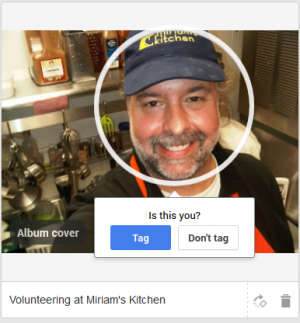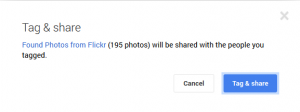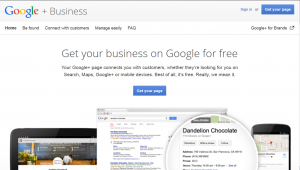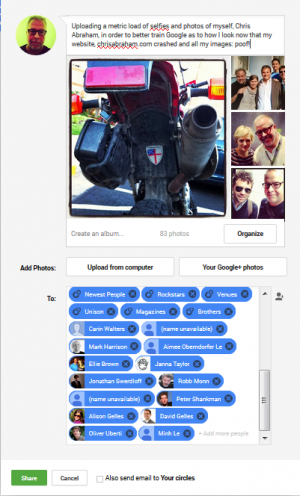My buddy Terence has a problem. He doesn’t like what comes up on Google Images when he searches. He’s not suffering from a reputation disaster or an embarrassment of embarrassments, he just doesn’t like what he sees when he searches for his name. I took a look and the fix was simple: he is a ghost online. When I say he’s a ghost, I don’t mean he’s invisible, he’s just translucent. Google doesn’t like to work too hard on delivering results but when Google can’t find recent, fresh, and accurate photos, it tends to dig through the dumpster for just about anything. Google can get desperate.

In the case of my buddy, he takes the curation of his personal brand so seriously that not only does he not feed blogs, social networks, gallery sites, Pinterest, news sites, LinkedIn, Facebook, Twitter, or Google+, he spends a lot of time asking site owners, myself included, to take down pics, snappies, and photos he doesn’t like.
The only thing left, really are very eccentric photos of him a decade ago on Media Bistro when he was just a 24-year-old puppy. His photo results are so rarefied and so bizarre because Google gets desperate. Like I have said many times here, Google abhors a vacuum.
Google doesn’t like to work this hard. Google generally stacks the deck with brand-new, popular, quality, high-resolution, well-tagged and well-described photographs. But here’s a secret: Google loves fresh, hot donuts the most, even more than the perfect photo, it wants the newest.
In order to push the world’s most powerful and responsive search engines to serve up not just day-old images but decade-old images, Google must have been starving.
What I told O? Feed Google!
 Because Terence comes from a journalism background, he feels like feeding his own propaganda into the mix is cheating, but it’s not. Google’s just looking for quality content. Content that’s verified, possibly, or coming from a reliable source.
Because Terence comes from a journalism background, he feels like feeding his own propaganda into the mix is cheating, but it’s not. Google’s just looking for quality content. Content that’s verified, possibly, or coming from a reliable source.
When it comes to Real Names, Google is even fussier.
O needed to start pushing content into the Googlesphere, content that includes photos of himself (from the present and the past) that pass muster and live up to how he sees himself and his personal brand. O’s a designer and an artist, so he also needs to push as much of his work up to the Internet as well. One caveat: Google cannot read minds (yet). Make sure that every photo, scan, and illustration is tagged, titled, described, and also named as completely as possible; and, in this case, with his full name. So, each photo of me, for example, would look like some version of this: chris-abraham-in-kathmandu-nepal-1991.jpg. Google does care about file name, if possible, and also cares about Exif data from your camera, if possible, too. So, if you have original photos straight from your digital camera, without too much post production work, then that could be useful for Google to understand each photo.
So my instructions were simple:
 The most efficient way to feed Google, in my opinion, is through Google+. Google really wants Google+ to work, so it’s putting all its eggs in that one basket. I told Terence to pimp both his personal Gmail account’s Google+ account as well as build up a Google+ Business Page for his design firm. I told him to fill out everything completely, to the point of privacy pain, including his Google Profile and his associations, places he has lived or lives, sites and social networks he writes for and shares on, and every other detail he can. I also demanded that he set up both his G+ profile and page to be as public as humanly possible.
The most efficient way to feed Google, in my opinion, is through Google+. Google really wants Google+ to work, so it’s putting all its eggs in that one basket. I told Terence to pimp both his personal Gmail account’s Google+ account as well as build up a Google+ Business Page for his design firm. I told him to fill out everything completely, to the point of privacy pain, including his Google Profile and his associations, places he has lived or lives, sites and social networks he writes for and shares on, and every other detail he can. I also demanded that he set up both his G+ profile and page to be as public as humanly possible.- Create a folder with all the photos of you from your entire career that you feel like best represent you in the flattering light you demand, add to this batch photos and scans from your favorite projects, your best works, and your most memorable travels, and then…
- Every day — slowly, surely, carefully — feed all that content, in little, careful, spoonfuls, into Google. Take enough time to make sure each photo is properly tagged (though Google will try to help you along) and that just because you can tag your photos as yourself, consider tagging other people as well. As I said, Google doesn’t like it when its members half-ass things. So, write complete and compelling descriptions when it comes to each uploaded photo but also make sure you write something interesting and compelling when you share the photos to your wall. And, be sure to tag as many people as you can find in your tagging search.
 Try to integrate the Google+ profile into your life: share your address book with Google and make a point of trying to connect with all the people he knows, and then be sure to put them in their correct circles. Remember, Google works on the value-for-value exchange. The more you give up to Google in terms of who you are, what you do, where you will, have, and are doing it, what you look like, with whom you associate, and how you’re related (those crazy Google+ Circles).
Try to integrate the Google+ profile into your life: share your address book with Google and make a point of trying to connect with all the people he knows, and then be sure to put them in their correct circles. Remember, Google works on the value-for-value exchange. The more you give up to Google in terms of who you are, what you do, where you will, have, and are doing it, what you look like, with whom you associate, and how you’re related (those crazy Google+ Circles).
Hopefully, if he really go up into his attic, search out everything he could find, be it digital or scanned print, make a point of posting every single photo that doesn’t make him physically ill (this will be both challenging and difficult for my friend Terence, surely) — and then make sure all the images are set to Public (and share them with all of your Extended Circles and all your other relevant circles if you feel comfortable with that) — then he should start seeing his own personal images and photos bubble to the top of Google Images search results, effectively pushing down all of those decade-old, goofball photos that have been torturing him for at least that entire decade.
As a final note, there are a lot of other things he can do, as well. Since he’s sort of a famous designer, Terence can probably get his personal Google+ personal profile validated (sort of an honor you get if you’re a little bit awesome); Terence can also jump through the hoops to get his Business Page validated too. I would recommend that he distributes the photos between the two platforms, Personal and Business, but that he allow a lot of crossovers. I mean, most of the photos should be uploaded to his G+ personal account (since he is his brand); however, when it comes to his business page, it should probably not include selfies, party photos, or weekend getaways, that said, the more personable, accessible, knowable, and human Terence is able to come across through his business page the better.
And he shouldn’t be afraid to post (and tag!) the same photos to the different platforms, both the personal and business. The only filtering he should do is on content that’s inappropriate, too personal, or well outside the offerings that his design firm offers.
Finally, I recommended that Terence read about how authorship will help him extend his deep connections with Google, including all of the sites he’s posted on, the TED talks he’s in, the blogs he written, the news articles he’s produced — anything, including all of the social networking sites he’s on. Google wants to know it all, it wants to know everything. And, if he gives until his nose bleeds, Google will most certainly reward him, especially since he’s respected, well-known, admired, and acclaimed.
Like everything Google does, Google’s hoping that if Terence jumps on board to Google+ 100% then all of his friends will follow — and, when it comes to taking back his brand on Google Image search, he can — and must — take advantage of it.
Feel free to email me at chris@gerr.is or call me at +1 202-351-1235
Learn more about Chris Abraham at Gerris digital.
Related articles
- Dominate your personal brand on Google Images (biznology.com)
- Dominate Your Personal Brand On Google Images (business2community.com)
- How to Add Google+ Authorship to Your Blog and Why It’s Important (businessbee.com)






